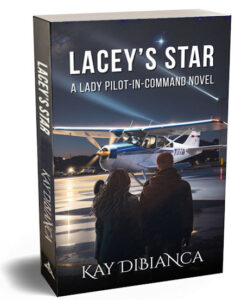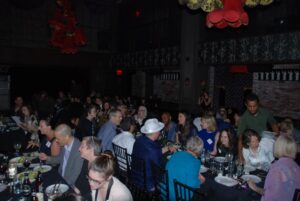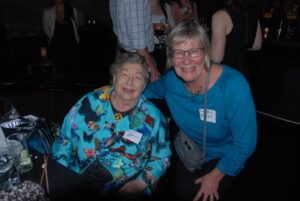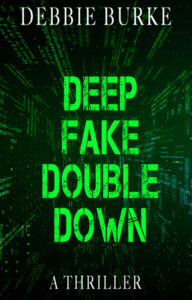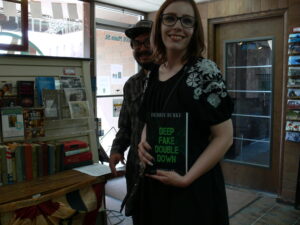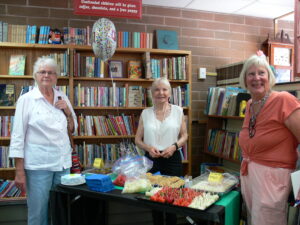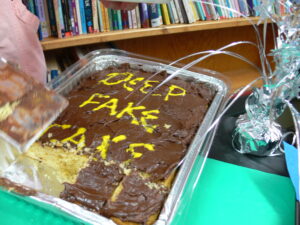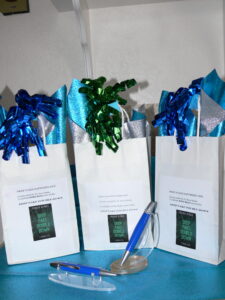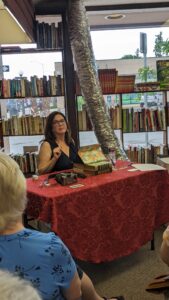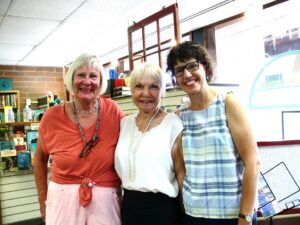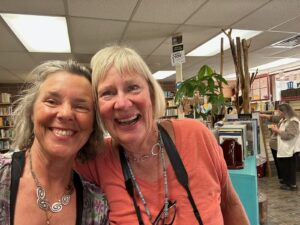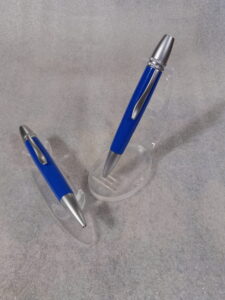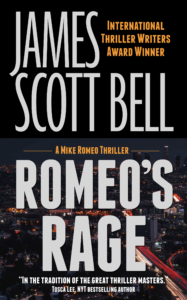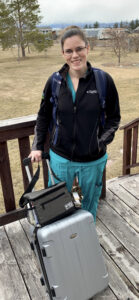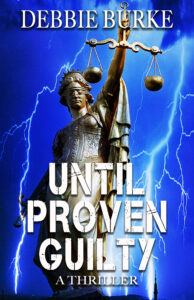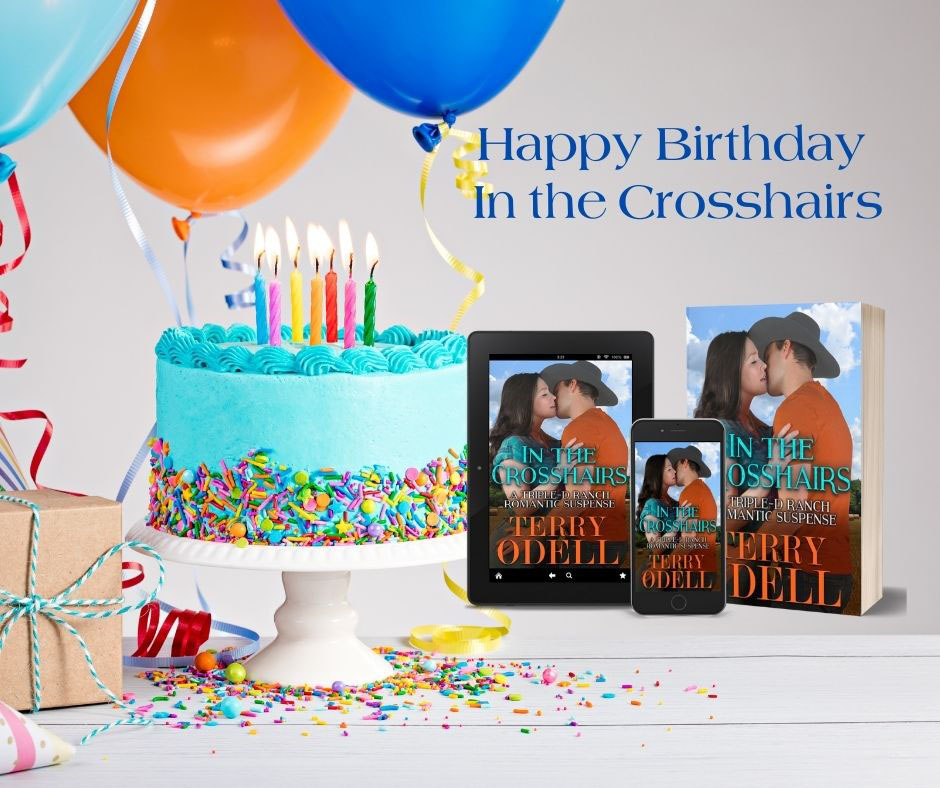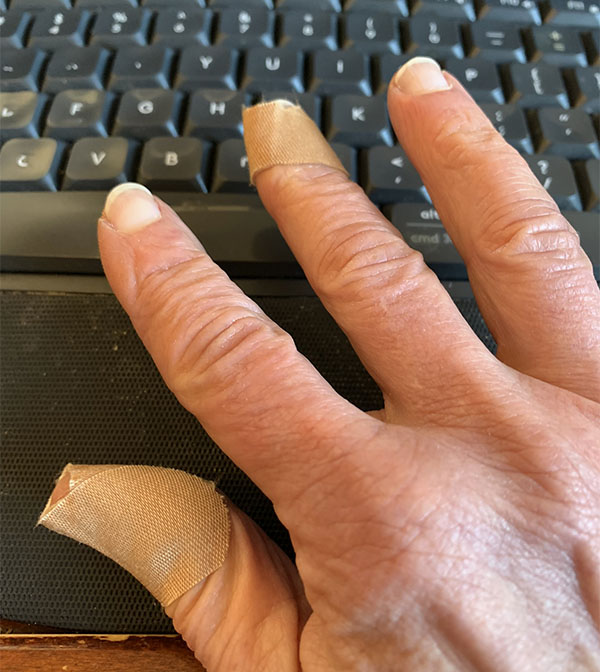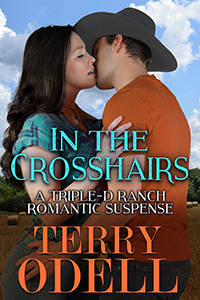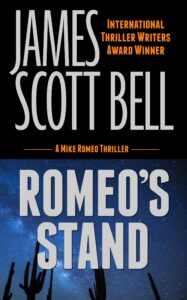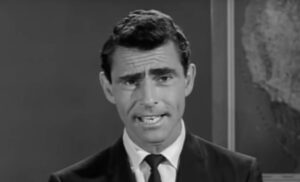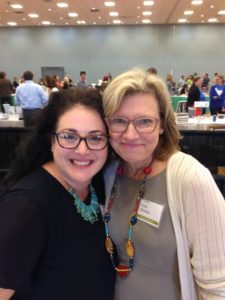by Debbie Burke
Today, we’re crawling down in the weeds to discuss a couple of minor details about promotion and marketing. Will these help you sell thousands of books? Nope. Probably not even hundreds. But every book sale is precious and small details matter.
Having been in business, I have decent marketing knowledge and experience. But self-promotion is a big problem for me so I’m always looking for ways to make it less awkward.
My new book, Fruit of the Poisonous Tree, #9 in the Tawny Lindholm Thriller series, published October 1.
That prompted me to rethink business cards and bookmarks. Yup, I warned this post was going to be about teeny-tiny details.
Author business cards are necessary. They lend a professional tone that says you’re a serious writer. Even if you haven’t yet published any books, it’s still a good idea to have cards printed with your name and contact info (email, website address, social media handles) to give to people you meet at conferences, book events, classes, etc.
Note: for privacy and safety, I don’t recommend printing phone number or physical address on business cards. If I want a particular someone to have my number, I handwrite it on the card.
Designing cards is a trial-and-error process. Mine have gone through many iterations. I use Canva (free) to design them. I started on the cheap with plain vanilla, one sided black & white. Next upgrade, I tried a slightly fancier, glossy finish version with a background pattern of books. My name, website, and email were printed on the cute background. But for aging eyes, lack of contrast made the text too difficult to read. Then I tried color but only one side. The most recent versions are two-sided and color.
Yes, each version is progressively more expensive, but the expense is deductible.
Business cards make an important impression at conferences, signings, teaching gigs, appearances. When you meet dozens or hundreds of new people, you want to stand out so they remember you in a positive way.
A couple of years ago, I discovered thumbnails of book covers make a much stronger impression than a straight business card. People turn the card over and say: “Did you write all these books?” “Yes.” “Wow! Cool!”
Whether you have one book or many, IMHO, adding cover images to your business cards is worth the expense.
 A recent design is two-sided, full color. Side 1 is my name and the kinds of writing I do (novelist, journalist, blogger), my website address, social media links, and email.
A recent design is two-sided, full color. Side 1 is my name and the kinds of writing I do (novelist, journalist, blogger), my website address, social media links, and email.
Side 2 has thumbnails of book covers and sales outlets.
Here’s a sample with six book covers.
As I kept adding to the series, the second side of the card got crowded. At eight books, there was no more room for expansion.
Hmmm, did I need to consider a larger format such as a bookmark?
Many authors give out bookmarks, but I never had because I don’t use them myself. Why should I waste money on something that likely ends up in the wastebasket?
Did I have a lesson to learn? Yes!
 As an experiment, I had color bookmarks printed. One side was my name, photo, website, and where to buy books. The second side showed thumbnails of eight book covers.
As an experiment, I had color bookmarks printed. One side was my name, photo, website, and where to buy books. The second side showed thumbnails of eight book covers.
Last January, Barnes and Noble opened a new store in our town and hosted signings by local authors. Hundreds of eager readers showed up because there hadn’t been a major bookstore in the area since Borders shut down in 2011.
In addition to the books on my table, I laid out business cards and bookmarks. I noticed people didn’t pick up many cards, but they did pick up bookmarks.
Maybe I needed to rethink my attitude that bookmarks are a waste of money.
With the launch of book 9, again I’d run out of space for covers.
How to feature the new book?
 I put the cover of Fruit of the Poisonous Tree on one side with my name, website, and where to buy. On the second side were the covers for the rest of the books.
I put the cover of Fruit of the Poisonous Tree on one side with my name, website, and where to buy. On the second side were the covers for the rest of the books.
I started carrying a pocketful of bookmarks in addition to business cards.
Pro tip: buy clothes with pockets.
Zumba friends have always been supportive of my books. When I offered the new bookmarks at Zumba class, people snapped them up. Several women asked if they could take additional ones to give to friends and their book clubs. One is heading to Arizona for the winter and wanted to share bookmarks with her reading group there.
The pocketful I’d brought to class quickly ran out. I brought more to another Zumba class with different people. Ran out again. People I didn’t know asked questions about my books. Passersby in the gym stopped to listen to our conversations and asked for bookmarks.
Why will people turn down a business card but eagerly accept a bookmark?
Here’s the first lesson that I needed to learn:
Many readers like and use bookmarks. Because of tunnel vision, I had discounted their importance.
What I want or like doesn’t matter; what the reader wants or likes does matter.
In salesmanship, there are five steps to making a sale:
- Attention.
- Interest.
- Desire.
- Conviction.
- Decision.
Bookmarks accomplish two of the five steps necessary to make a sale.
The second lesson: people perceive business cards and bookmarks in different ways.
A business card is more than an identification and contact tool. It sends a subtle psychological message. When you accept a salesperson’s card, their unspoken request is, “You are going to buy this car from me, aren’t you?”
That’s why it’s called a business card. If you take one, that indicates an interest in purchasing goods or services.
Accepting their card is their first step in breaking down a buyer’s sales resistance.
When someone doesn’t want to buy or isn’t sure, they may be reluctant to take an author’s card because they don’t want their acceptance to be perceived as a commitment that they’re going to purchase your book. The implied pressure, even though it’s slight, can leave people with an uncomfortable impression of the author.
We don’t want that!
A bookmark is different. It’s a colorful, useful gift, not an obligation to buy. It’s a friendly reminder of books they may want to read. Reading is a pleasurable activity. That leads to a positive association with the author.
We do want that!
Of course, you’d like them to buy your book, but a bookmark is accepted in a different spirit than a business card. It’s a welcoming, open-ended invitation, not a commitment.
Watch the difference in people’s reactions when you offer them a business card vs. a bookmark.
Business cards and bookmarks serve different purposes and authors do need both.
It’s too soon in my experiment to tell if bookmarks lead to more sales but so far the favorable reactions from readers lead me to believe they will. Anything that increases reader interest and engagement can’t hurt.
~~~
TKZers: Do you use business cards, bookmarks, or both? Do you notice a difference in people’s reactions? Any tips to share about effective personal contact between authors ans readers?
~~~
Jerome Kobayashi, 80, worked long and hard to achieve his dream cherry orchard on Flathead Lake. But now someone wants to destroy that dream.
Can investigator Tawny Lindholm and attorney Tillman Rosenbaum prevent that?
Ebook $3.99 or FREE on Kindle Unlimited




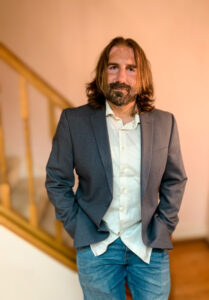
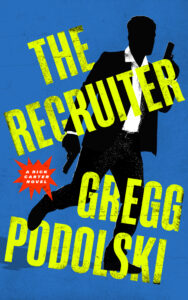 Several weeks ago, Blackstone sent me an ARC (advanced review copy) which I’d requested.
Several weeks ago, Blackstone sent me an ARC (advanced review copy) which I’d requested.
